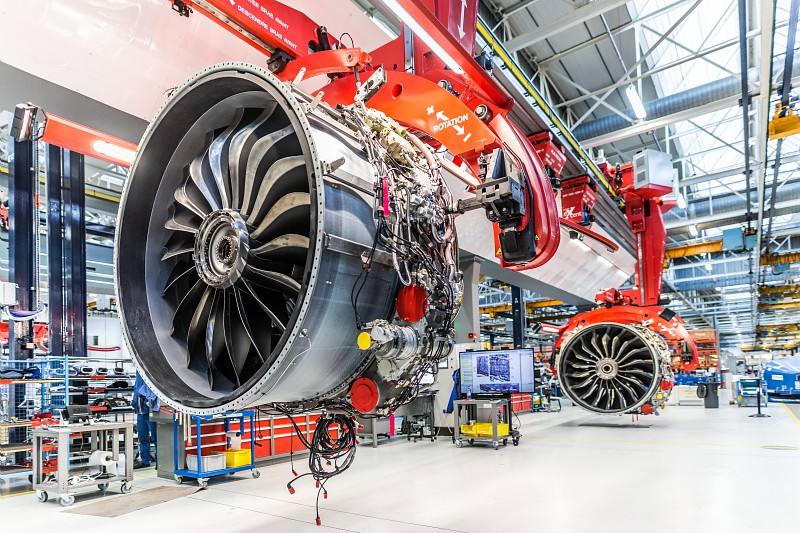Successively impacted by two crises, first the Boeing 737MAX crisis and then the Covid-19 pandemic, the French engine and equipment maker has nonetheless demonstrated its resilience. And despite a decline in sales - lower than forecast - Safran managed to post a profit, and looks to the future with optimism.
Two crises crossed
After two crises, one after the other, but resilience and rapid adaptation with a profit despite everything, this is the situation at Safran for 2020, which has been brutally summarized. "We have adapted to two crises, first the shutdown of the 737MAX and Boeing's decision to shut down the 737MAX production line in December 2019, which led us to revise our production plan and take a number of adaptation measures in early January 2020. Then, starting in mid-March, Covid-19 had an impact on our after-sales revenues," said Olivier Andriès, Safran CEO.
A 66% drop in passenger traffic in 2020 compared to 2019
In 2020, in addition to the grounding of the Boeing 737 MAX, the aviation industry faced the biggest crisis in its history with a collapse in air traffic due to the confinement and travel restrictions imposed in all regions of the world. Witness the weekly flight cycles of the CFM56 and LEAP fleets, which at the end of December 2020 were down 43% and 6%, respectively, compared to 2019. They continued to decline, reaching -61% and -29% respectively on February 14, 2021. "In terms of passenger traffic, IATA figures for 2020 show a 66% drop in passenger traffic compared to 2019, and a 57% drop in average seat kilometer (ASK) capacity compared to 2019," said Olivier Andriès, Safran CEO.
Half as many Leap aircraft delivered as in 2019
In terms of deliveries, at the end of December 2020, CFM56 and LEAP engines totaled 972 units delivered (out of a target of 2,000), compared to 2,127 in 2019. CFM International delivered 815 LEAP engines in 2020, compared to 1,736 in the previous year, half of which are expected in 2019. At the end of 2020, the LEAP order book stood at more than 9,600 engines. 157 CFM56 engines were delivered in 2020, compared to 391 in 2019. But the achievement - because that's how you describe it - is in terms of engine manufacturer sales. Sales declined by 32.5%, which means that Safran also limited the breakage, since the decline was less than the 35% initially forecast. However, the decline impacted all divisions: Propulsion revenue was down 36.2%, due to low volumes in original equipment (both civil and military aircraft) and a decline in service business (service activities for civil engines).
A gradual recovery from the summer season
Safran remains optimistic, however, and expects traffic to pick up again in the summer of 2021. "While the first quarter of 2021 will be difficult, and very likely in the same vein as what we experienced in 2020, we are convinced that we will see a gradual, step-by-step recovery in traffic quarter after quarter in 2020, with a key point being the summer season, when traffic will resume in 2021," commented Olivier Andriès. Leap is the engine of choice for airlines, as demonstrated by our market share on the A320neo and our order book [...] the engine fleet is very young, and puts us in a position to be the first to benefit from the upturn in air traffic, because air traffic will pick up first and foremost in the domestic market, i.e. in the short- and medium-haul segment.
31 737MAX single-aisle jets per month in March 2022 for Boeing
In terms of single-aisle aircraft, Boeing and Airbus have made announcements regarding production rates for 2021. "While Airbus has decided to slightly increase its production rates in the second half of 2021, Boeing's first priority is to deliver the aircraft they have in stock. At the end of 2020, I believe there are 436 aircraft parked around Seattle that Boeing must deliver. In addition to these aircraft to be delivered, we delivered a number of engines to Boeing throughout 2020. As a result, Boeing will gradually pick up the pace during 2021. They have announced that this recovery should enable them to reach 31 aircraft per month by March 2022," commented Olivier Andriès.
Taking advantage of the crisis to launch the future now
In 2035, the French engine manufacturer will bring to market an "engine that breaks with what we have in our current range," comments Olivier Andriès. Among other things, this turbofan will take on board the knowledge and other technological building blocks acquired during exploratory programs, notably the Open Rotor, even if for the moment the engine manufacturer refuses to comment on the architecture of the future turbofan.
Découvrez cet article sur Air&Cosmos

